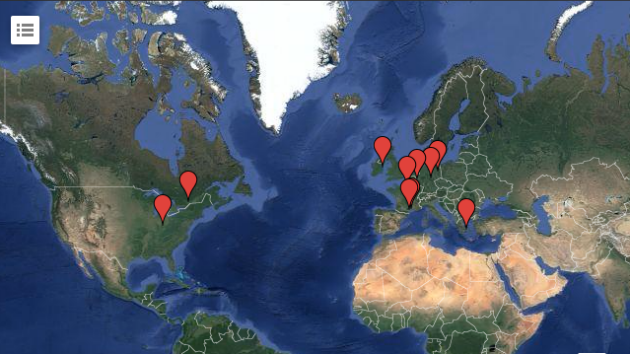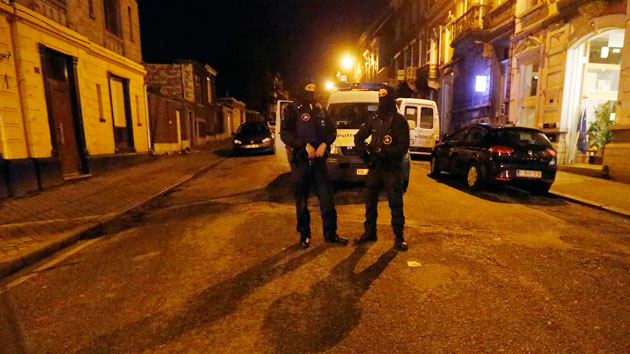
Paris, France jumped 100 spots in the list of cities at risk for terror attacks after the January Charlie Hebdo massacre. <a href="http://www.shutterstock.com/pic-112137761/stock-photo-eiffel-tower-paris-france.html?src=8hvyA9T2T8UxJ3OedbyZMA-1-6">beboy</a>/Shutterstock
Americans are understandably terrified of terror attacks. But good news! These fears have nothing to do with actual data. According to a new tool released last week, no US cities are among the world’s 50 most at risk of terror attacks.
The index, designed by UK based Verisk Maplecroft, a global risk assessment firm, calculates the risk of terror attacks in “1,300 of the world’s most important commercial hubs and urban centers” using historic trends. By logging and analyzing every reported attack or event per 100 square meters and calculating the frequency and severity of those incidents, Maplecroft’s tool establishes a baseline for the past five years. Then, it compares that data with the number, frequency, and severity of attacks for the most recent year. Depending on the most recent statistics, cities move up or down on the list of cities at risk for terror attacks.
What cities are in danger? Cities near ISIS. Baghdad is the most terror prone city, followed by five other places in Iraq—including Mosul, an ISIS stronghold in northern Iraq, and Al Ramadi, ISIS’s most recent hostile takeover. In just one year, as of February, over 1,000 residents of Baghdad lost their lives in one of the almost 400 terror attacks the city endured.
A total of 27 of the 64 countries at “extreme risk” are located in the Middle East, and 19 are in Asia. Residents living in the capital cities of Afghanistan, Somalia, Yemen, and Tripoli face some of the strongest risks of terror attacks as well. Maplecroft points to the risk of terror incidents in high-ranking countries like Egypt, Israel, Kenya, Nigeria, and Pakistan as major threats to US commercial interests.
And, recent events have triggered some cities to climb in the rankings. Prior to the Charlie Hebdo attack, Paris didn’t even make the top 200 most at risk cities. But according to the current index, the French capital jumped over 100 spots, now coming in at 97. Increasing violence purported by African militant groups, including Boko Haram in Nigeria and Al Shabaab in Somalia, have heightened the risk of terror incidents in African nations, landing 14 countries in the top 64.
So stop freaking out about terror attacks, America.
















